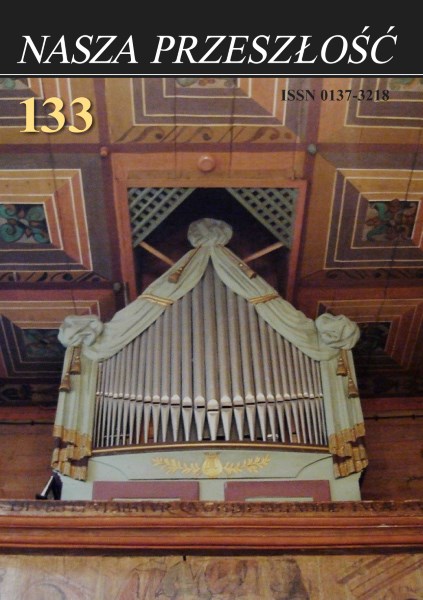Przejawy pornografii według prasy katolickiej w II Rzeczypospolitej
The subject of the article is the history of the organ in the church of St. Adalbert and Our Lady of Sorrows in Modlnica. The article is based on the results of archival queries, with the largest number of sources coming from the parish archive. The
Author(s): Paweł BeczekSubject(s): History of Church(es)
Published by: Instytut Wydawniczy Księży Misjonarzy “Nasza Przeszłość”
Keywords: shamelessness;Czesław Lechicki;Second Republic of Poland;fashion;pornography;Catholic press;dance;
Summary/Abstract: Over the years, the understanding of the term pornography has changed significantly. We find out about this by analyzing the Polish inter-war Catholic press. The definitions of the phenomenon under discussion depart from contempo-rary cultural norms. Catholic journalism in the Second Republic of Poland developed various concepts of terminology. A frequently adopted definition was that proposed by Czesław Lechicki, who identified pornography with everything that “caused a sexual impulse”. These rigorous criteria greatly broadened the semantic scope of the analyzed concept. The editors distinguished many forms of pornography media such as: postcards with photos of naked women, literature, films, theatrical plays, newspa-pers, advertisements, songs and even playful jokes. Such materials included novels by Stefan Żeromski or Hanka Ordonówna’s songs. The phenomenon of pornography was often identified with the socalled shamelessness, which took the form of immodest female fashion and modern dances (tango, one-step, shimmy, charleston or foxtrot), which were considered inappropriate.
Journal: Nasza Przeszłość. Studia z dziejów Kościoła i kultury katolickiej w Polsce
- Issue Year: 2020
- Issue No: 133
- Page Range: 227-257
- Page Count: 31
- Language: English, Polish

